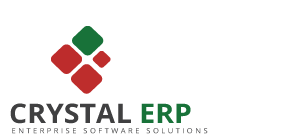Business Transformation and the IT Journey
When we look at significant business model changes during the past thirty years, technology has often been at the core. From mainframes to mini-computers to microcomputers to client/server to the Internet – technology change has been a major driver for business change.
Today, while there are certainly new technologies, it’s the way we access and consume those technologies that provides a significant impact on our business and revenue models. In other words, the business value of technology has become the driver for business change.
We can see this most clearly when we look at what we’re calling the IT Transformation Journey and its impact on the business. As organizations change the way they access and consume technology, they have become more flexible and responsive to their industries and customers.
IT Transformation Journey
As the name implies, this journey is transformational, not really step-by-step. As I outline the six stages that Logicalis has identified, think of them as stepping stones on a path, rather than landing areas. Sometimes the path is quite serial, one step follows the next, but this is not always the case for every organization.
The first step of the journey for most companies is the use of component-based architectures in their data centers. This is a traditional IT consumption model – you purchase, maintain and add or upgrade technology as needed. But the model does not scale very well. Increases in compute, network or storage resources are handled separately and often by separate IT staffs. Requests for added storage often outweigh all other requests. And there is a great deal of either under-scoping or over-scoping what is required.
The next stepping stone in the journey is virtualization, where companies can begin to realize numerous benefits including the ability to reduce their data center footprint (overgrown in the last stage) and energy consumption, more quickly provision resources and improve manageability and uptime for applications. The impact on the business is to reduce IT costs and improve access to necessary IT infrastructure.
The third stepping stone in the journey is deploying converged infrastructure. Seamlessly integrating compute/storage/networking technologies provides a flexible, agile and easier to deploy infrastructure by delivering the efficiency and business agility of virtualization and cloud computing. These systems provide dynamic pools of resources that can be intelligently provisioned and managed which, in turn, provides the business the ability to speed delivery of IT resources to end-users and begin to consume technology in a more flexible, managed and automated fashion.
The next two steps have to do with protection – or disaster recovery – and automation and orchestration – or the ability to treat technology as a metered service. This provides a leaner, more secure and effective IT infrastructure that can be more easily aligned with business goals.
At the end (so far) of the IT Transformation Journey is the cloud. And, just like each step before it, the cloud combines earlier benefits and offers new opportunities. But unlike the other steps, cloud computing has a transformative effect on the business. It’s not about the technology anymore. Instead, it’s about the way the business can now operate. The technology can be consumed as a service – as needed and on-demand. And it can be turned off just as quickly.
We believe that hybrid IT will continue to be the way that most businesses consume technology – using a combination of the different steps that have come before, as well as newer cloud technologies and delivery models. This will include some premises-based, some off-premises-based and cloud-based technologies.
Business can scale up or down quickly. New products can be launched, spun out or spun down less expensively. New markets can be entered more easily. The request for additional IT resources that formerly took multiple steps with multiple IT stakeholders over a period of multiple months, can now take minutes.
The cloud is fundamentally business-model based, while using enhanced technology at its core. Businesses using the power of the cloud change from the purchase economy to the subscription economy. In other words, organizations today can (finally) focus IT resources on how to build, expand and strengthen the business, rather than how to obtain, manage and pay for technology.
The IT Transformation Journey doesn’t have a specific beginning or ending. Different organizations, depending on their existing technology and maturity, are going to begin at different points. And there will certainly be a next generation of cloud services offering additional capabilities for business. But it is a path to a more agile way of doing business.


Leave a Reply
You must be logged in to post a comment.